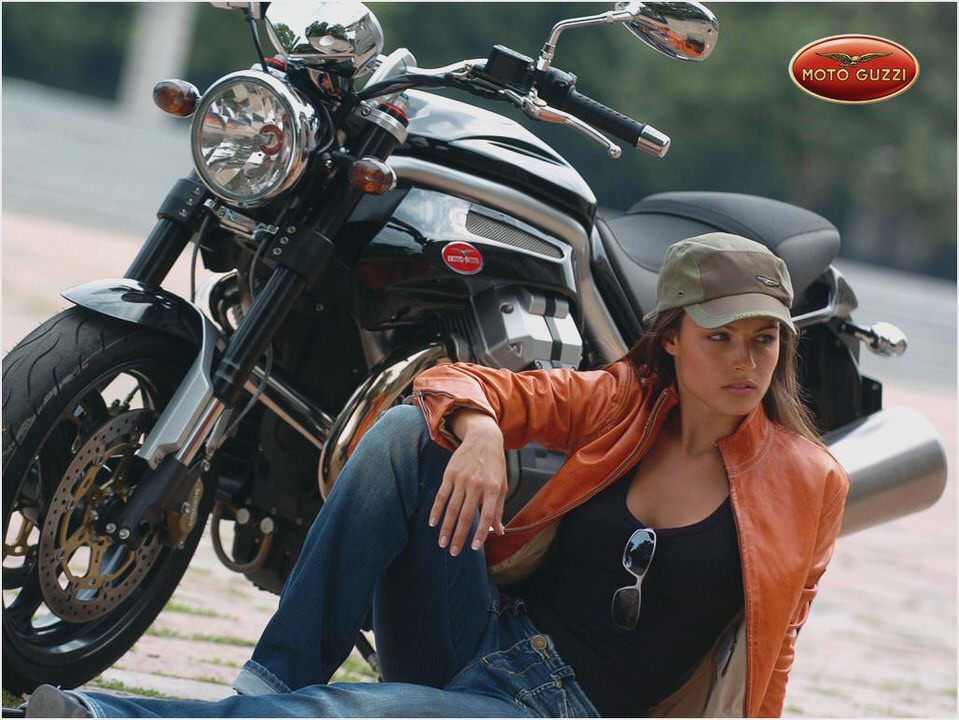
Moto Guzzi Griso 1100 – Moto Guzzi builds its best ever
Moto Guzzi Griso 1100
Moto Guzzi builds its best ever
Bruno de Prato
January 2006
Griso means grayish in the Italian dialect of the region around Lake Lario, where Moto Guzzi is located. While it’s true this doesn’t seem to be a very exciting name for a motorcycle, there is a back story: Griso is the name of a gray-bearded evil-baron character in what is perhaps the most famous saga in Italian literature I Promessi Sposi or The Betrothed, which happens to be set in and around Guzzi’s home town.
And so Moto Guzzi keeps referring to local traditions when naming its bikes, be it that of a good wind that blows across the lake (Breva) or of a bad guy. All this being said, the vaguely evil connotations of the Griso name are perfectly fitting, because this new Guzzi 1100 is indeed a bike full of grit. From its outrageously aggressive styling to the quality of its ride, this is a bike that promises to largely revamp the image of Moto Guzzi.
First, it must be acknowledged that the Griso project is not an all-Moto Guzzi effort. There was a lot of Aprilia involvement during construction of the prototype that debuted at the 2003 Milan Show, where it stirred enormous attention alongside the MGS-01 roadracer. The message was clear that the Guzzi Eagle was out to prey again, after years of living on pet food. Then the Griso was lost in the fog of the financial crisis that dissolved the Aprilia Group.
Piaggio came to the rescue and Moto Guzzi’s new, highly experienced CEO Daniele Bandiera was given the green light to get the Griso into production. This was accomplished in remarkably short time and done all in-house—no help from Aprilia.
Moto Guzzi calls the Griso 1100 a techno-custom, a fancy definition to help set it apart in a world full of cruisers and naked bikes.
The custom elements are clear, from the distinctive use of the frame as a major styling riff to the svelte line of the tank to the bold exhaust manifold and the almost obscenely massive muffler. The techno touch comes from the very rational riding posture and from the competence of the chassis. The final combination has a quality fit and finish down to the last detail like we have never seen before on an Italian bike.
Altogether, the production Griso (available in the U.S. this summer for about $12,500) retains all the visual magic and impact of the prototype and makes it fully functional, something that isn’t very common in the transition from showbike to showroom. In black or in red, it’s all Moto Guzzi, in yellow it’s the ultimate transgression, in light metallic blue it’s. aarghhh! Forget Light Metallic Blue will you!
While the concept and styling are big leaps, the powerplant is not. This is basically the same engine as that of the Breva 1100, which itself was a mild evolution of the V11 mill. After some 40 years of boring, stroking, refining, tuning and re-tuning the original V7 designed by the late Dr. Giulio Cesare Carcano, the air-cooled, transversely mounted 90-degree V-Twin is now in its ultimate 1064cc displacement (92 x 80mm bore and stroke).
Internal changes reduced reciprocating mass and vibration, while the engine cases were similarly analyzed and lightened. Oil sump capacity was limited in the redesign, so a large oil radiator has been added and applied in effective Griso style—in plain sight on the right side of the engine, framed by a black, vented airbox.
The centrally located, chain-driven camshaft operates the valves via pushrods, while twin 45mm throttle bodies and Weber-Marelli electronic injection meter air and fuel. Claimed output is 88.1 horsepower at 7600 rpm, with peak torque of 65.6 foot-pounds at 6400 revs. These figures are slightly higher than those of the Breva due to the longer intake runners (better ram effect) and bigger airbox. The larger and less restrictive exhaust system also adds the extra kick at high rpm.
To further enhance the more aggressive response of the Griso power unit, the primary drive ratio is reduced from the Breva’s 26/34 to 26/36. Power enters a new six-speed gearbox of more conventional, two-shaft design (compared to the old V11’s three-shaft setup). This new gearbox is 40mm longer, but 5 pounds lighter.
And much smoother shifting. Final drive is shared with the Breva, complete with the so-called CARC, Moto Guzzi’s proprietary full-floating crow-and-pinion unit that eliminates chassis jacking typical of shaft drive.
As mentioned before, the frame plays a dual role, both as a structural and major styling element, figuring into the Griso’s visual appeal much more than with most bikes. This is the touch of creativeness that sets this bike apart. The pair of painted, fully exposed 50mm tubular steel spars run from the steering head to the two massive plates that clamp to the rear engine/gearbox mounting bosses and solidly locate the swingarm pivot.
Around the steering head, the spars are braced by a sturdy trellis structure composed of multiple triangulations centered on both the steering head and the transverse element that connects the spars where they bend inward to meet the steering head. These spars also solidly clamp the front engine mount, thus integrating the engine as a stressed member of the frame.
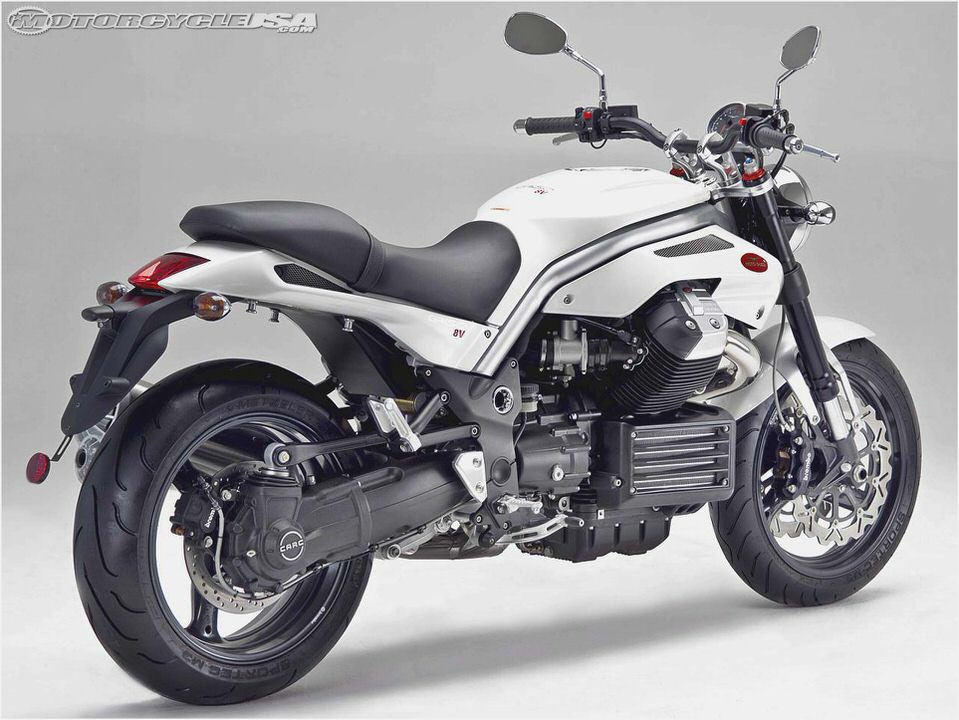
In the best Moto Guzzi tradition, the wheelbase is a long 61.2 inches. This means there is plenty of space between the axles for rider and passenger. Solo, weight distribution is 48/52 percent front-to-rear, which combines with a conservative 26-degree rake and 4.3-inch trail to make the Griso a very stable, surefooted bike.
The suspension allies well with this geometry. The inverted 43mm Showa fork was inherited from the Aprilia Tuono, while at the rear is a single gas-charged shock with a progressive linkage. Thanks the to the substantial offset of the shaft drive, the rear Pirelli Diablo Strada can be a meaty 180/55ZR17, complemented by a 120/70ZR17 at the front. A pair of 320mm Brembo discs and four-piston calipers at the front work with the single 282mm, two-piston setup at the rear.
With the 4.5-gallon fuel tank empty, the Griso scales 473 pounds.
The town of Mandello del Lario has a second merit in addition to being the location where Moto Guzzi was founded by Emanuele V. Parodi and Carlo Guzzi: It is surrounded by magnificent mountains where a myriad of roads provide perfect test loops. Right from the time you let out the clutch, it is clear the Griso is a very user-friendly motorcycle. It feels solid and responsive around town, while remaining stable at high speed.
The riding position allows both precise control and long-haul comfort, with a slightly sporty seat/footpeg relationship. The wide, straight handlebar induces a natural, leaned-forward posture.
Above all, though, the Griso shows the best of what is still available from the venerable Guzzi V-Twin. Throttle response is crisp and immediate. Suddenly, this engine that has long been regarded as the epitome of an ultra-reliable touring powerplant here shows an aggressiveness that warms the heart and makes it sing at every throttle opening.
The stronger peak torque comes at a lower rpm than on the Breva, and combined with the shorter gearing makes the Griso smoke off the line with enormous vigor. Low-end is one thing, but the real surprise is that the engine never seems to run out of breath, pulling hard all the way to redline. The overall response makes the engine power seem greater than the claimed numbers.
Even better, the versatility and responsiveness cooperates beautifully with the very capable chassis. Well-sorted suspension keeps bike attitude in check under acceleration, limiting the transfer of weight to the rear, which in turn keeps the steering response properly neutral when accelerating hard out of a corner. In all, the chassis of the Griso proved the best of the present Moto Guzzi batch, to the point that it deserves being celebrated on par with the legendary V7 Sport red frame.
It’s very firm and precise, agile and neat, totally stable at high speed, easy in city traffic and up a twisty mountain road. Cornering clearance allows 40-degree lean angles, which is more than adequate even for the most aggressive riding style on the road.
That is the biggest delight of all: The Griso is the unexpected Moto Guzzi. The Eagle is back.
Source: Cycle World
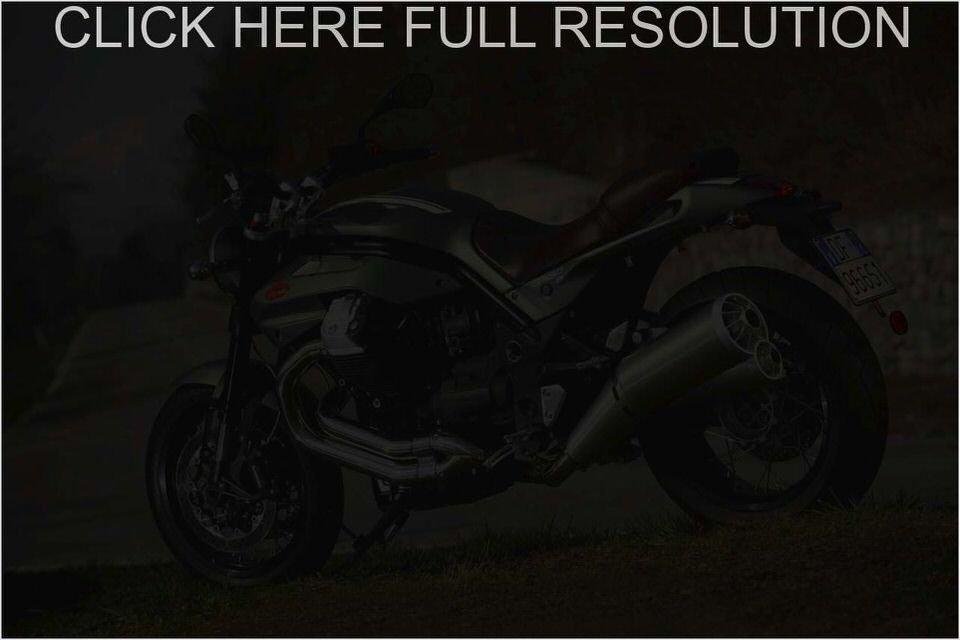
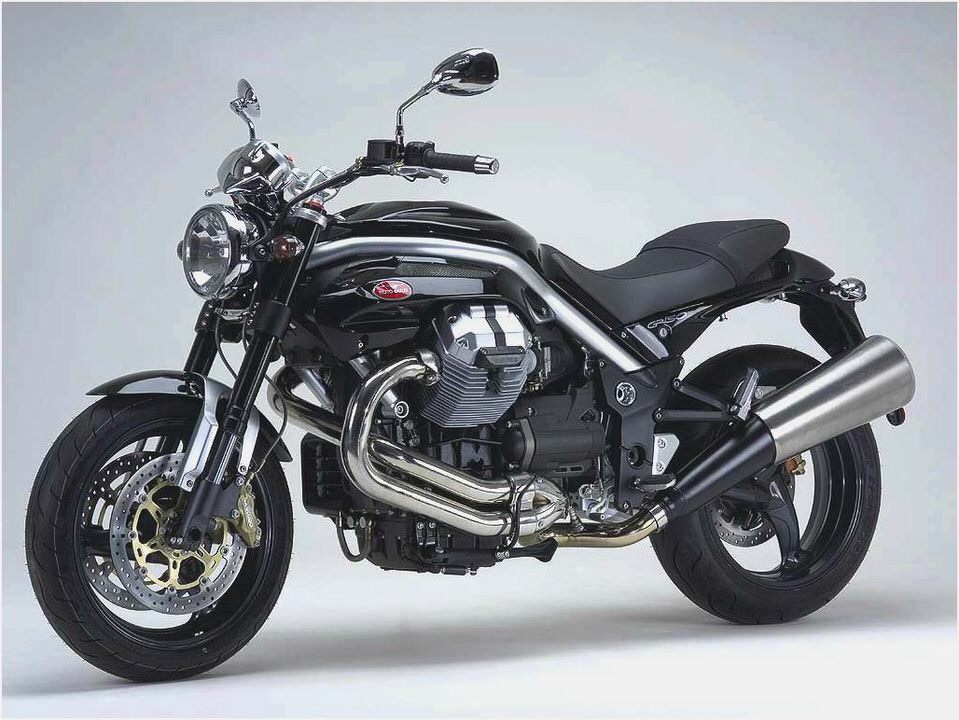
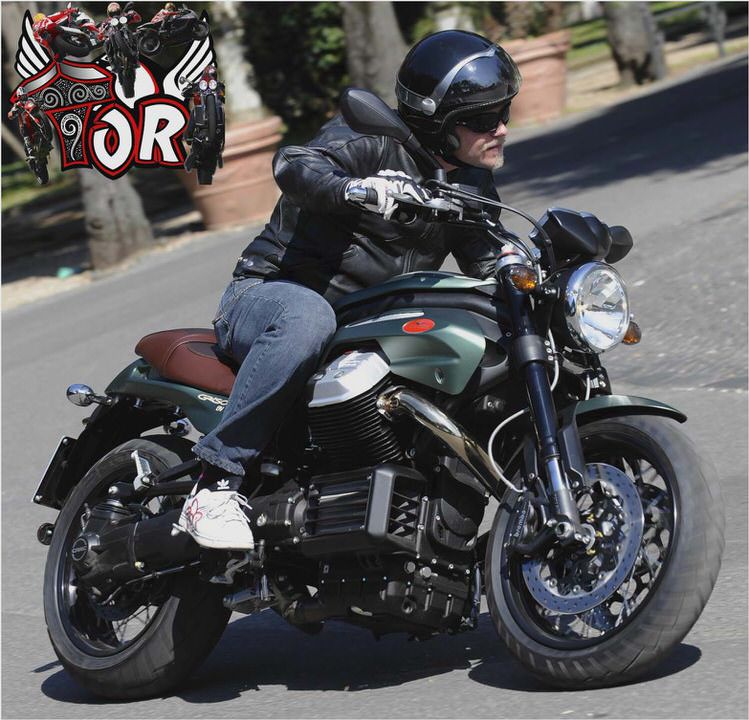
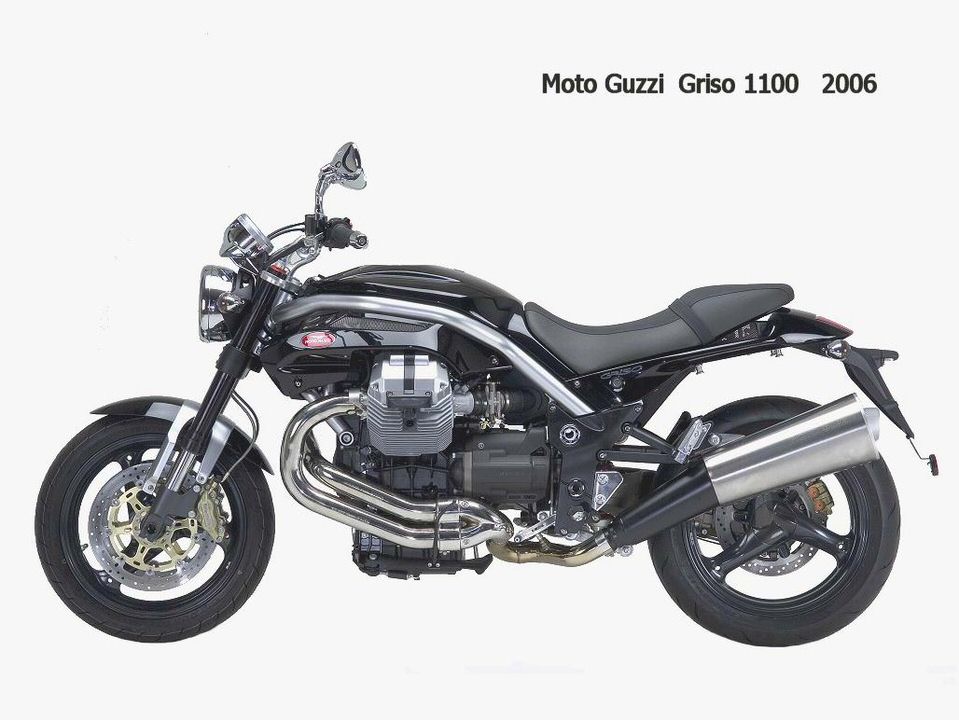
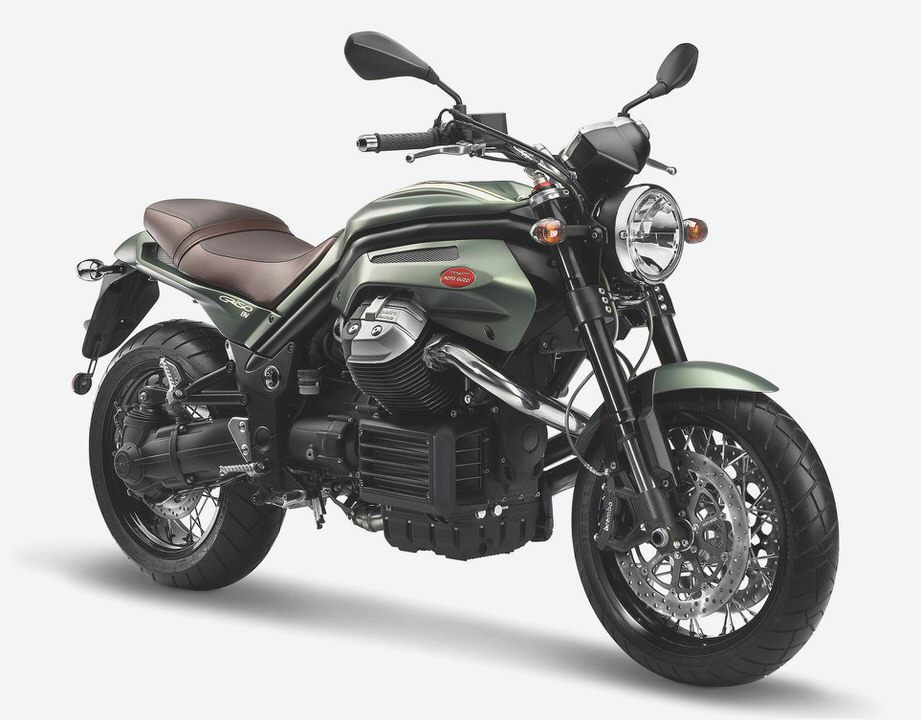
- Faster and Faster: 2013 Moto Guzzi V7 Racer, other variants, unveiled
- Miguel Angel Galluzzi – Wikipedia, the free encyclopedia
- Moto Guzzi Piaggio Group
- Moto Guzzi Le Mans by Kaffeemaschine Germany – Moto Rivista
- 1975 Moto Guzzi 850T for Sale Classic Sport Bikes For Sale

